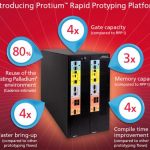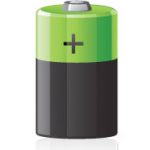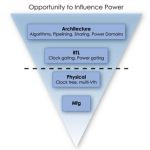All chips these days have to worry about power. Indeed it is typically the top of the priority list of concerns, above performance and even area. Transistors are effectively fast and free, but you can’t have too many of them (at least turned on at once). The most obvious way to reduce power is to lower the supply voltage. This … Read More
Tag: low power
Components for Wearables, Making the IoT Real
The screenwriter William Goldman is famous for saying that in Hollywood “Nobody knows anything.” Meaning that there is simply no way for any of the people involved to be able to predict which movies will turn out to be hits and which will be flops. I think the internet of things (IoT) is going to be like that. There will … Read More
Processor for Internet-of-Things (IoT)
Due to increasing proliferation of sensors in our everyday lives, evolution of IoT is natural. The mix of different building blocks with different speed-power-performance constraints makes IoT as the hottest upcoming application area for semiconductor IP vendors. The System-on-Chips (SoCs) coming up in this area typically… Read More
Palladium’s Little Brother Protium
Today, Cadence announced Protium, a new FPGA prototyping platform for software development. During development of an SoC, the most appropriate methodology changes. In the early days, developing RTL, the primary tool is simulation. Then, as the blocks get bigger or as the whole chip starts to come together, typically simulation… Read More
Keywords: FD-SOI, Cost, FinFET
How to synthesize a pretty good article Is SOI Really Less Expensive, and even more important the impressive amount of comments (56) generated? Let’s start with the initial article. Pretty good, but slightly biased, when you carefully dissect it, like I did in one of the comments (you can find it in-extenso at the end of this post).… Read More
Sensor Hub and Wearable Gestures
One of the challenges with the internet of things (IoT) is that many devices are both always on and battery powered (and not with a large battery). The responsibilities need to be split so that the device senses when it needs to wake up without requiring the application processor to be waking up all the time to make the decision since… Read More
Full-Custom Low Power Design Methodology
Digital designers have used logic optimization and logic synthesis for decades as a means to produce more optimal designs with EDA tools. On the analog and transistor-level side of design the efforts to automatically optimize for speed or power have generally been limited to circuits with only a handful of transistors. These … Read More
Low Power Design
So you want to do a low power design. Join the club. Who doesn’t? Today all designs are low power, it is the biggest constraint on what we can do on a chip. Power down; power domains, variable clock rates, mixed Vt libraries. Every trick is needed. And that is not even enough. We get to put our phones on charge each evening and there… Read More
Intel Quark awakening from stasis on a yet-to-be-named planet
We know the science fiction plot device from its numerous uses: in order to survive a journey of bazillions of miles across galaxies into the unknown future, astronauts are placed into cryogenic stasis. Literally frozen in time, the idea is they exit a lengthy suspension without aging, ready to go to work immediately on revival … Read More
Addressing Power at Architectural and RTL Levels
Major power reductions are possible by reducing power at the RTL and system levels, and not just at the gate and physical level. In fact, as is so often the case in design, changes can have much more impact when done at the higher level, even given that at that point in the design there is less accurate feedback about changes. Later the… Read More






